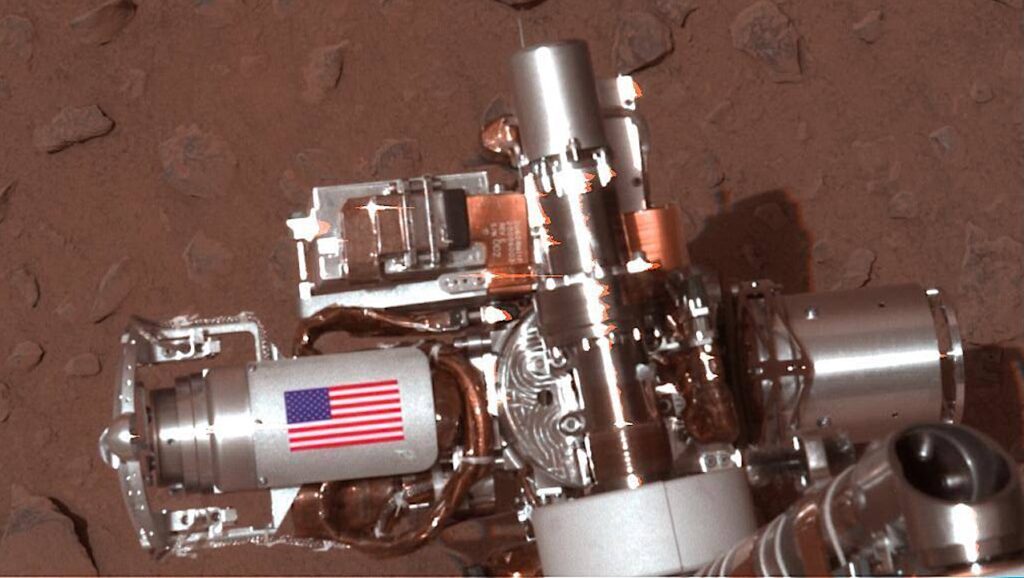NASA at 55

NASA at 55, SpaceRef
“President Eisenhower commissioned Dr. T. Keith Glennan, right, as the first administrator for NASA and Dr. Hugh L. Dryden as deputy administrator. The National Aeronautics and Space Act, the United States federal statute that created NASA, was signed into law 55 years ago today on July 29, 1958.
NASA officially began operations on Oct. 1, 1958, to perform civilian research related to space flight and aeronautics.
—
The Birth of NASA
By NASA’s Chief Historian, Steven J. Dick
(First published March 28, 2008 for the 50th anniversary.)
It may well be argued that NASA has become the world’s premier agent for exploration, carrying on in “the new ocean” of outer space a long tradition of expanding the physical and mental boundaries of humanity. Fifty (Five) years ago, however the agency that pushed the frontiers of aeronautics, took us to the moon, flew the space shuttle, built the International Space Station and revealed the secrets of the cosmos, was in its birth throes, and fundamental decisions were being made that profoundly shaped all that was to come.”
Marc’s note: What are your thoughts on NASA 55 years after it came into existence?








Go back to “…provide for the widest practicable and appropriate dissemination of information concerning its activities and the results thereof” as defined in Space Act of 1958. This was done to contrast to Soviet space program which disclosed very little information about their programs. Also like in 1958 provide resources (funding) in order for NASA to meet goals set by executive and legislative branches, unlike Soviet model of grandoise plans and artwork but meager commitment of resources.
In a perfect world, we would expect NASA, and entities like it, to constantly move forward in a linear fashion, always making progress and moving the boundaries of knowledge outward. But we don’t live in a perfect world. NASA is going to continue to have its ups and downs, its good times and bad times, as it has for most of its 55 years.
On one hand, we have to accept that as reality; on the other hand, we need to be more proactive in shortening the bad times and getting the most out of the good times. That’s not an easy task, but like most difficult tasks, the longer it’s left essentially unattended the harder is becomes to regain control and restart making progress.
To a significant extent, I believe it must begin by forcing the elected representatives in all of the “space” countries’ governments to be more responsible to all of their constituents, not just the handful who fill their campaign coffers. For the non-democratic space countries this situation is much more complex and perhaps not solvable, at least at this time. But for the rest, either we’re democracies or we’re not; we have to decide.
The current half-democratic practices of our elected governments is too often not serving us in the manner it was intended to. Space is just one victim of this deficiency, but one which seems to get clobbered hard and often. So, ask not what NASA and the other national space agencies can do for us, but what can we do for them to regain them the recognition and support they need to ensure our future on this planet and off it.
This, of course, is offered only as one person’s opinion.
To start with, it should actually be considered 98 years old, since NASA was really just the continuation and expansion of N.A.C.A., which was founded in 1915.
Given that thought, they seem to have strayed too far from their roots as an academic research organization focused on enabling industry through development and dissemination of technology and are now predominantly used as a conduit for directly passing money to politically favored entities. (For all you ‘new space’ fanboys, this applies to your heros just as much as everyone else feeding at the NASA trough.)
good point about NASA being an extension of NACA. Maybe we need more brilliant people Like Joe Ames, Hugh Dryden, and George Lewis at the helm.
below is from http://solarsystem.nasa.gov…
Dr. Ames… appointed by President Woodrow Wilson in 1915. Ames took on NACA’s most challenging assignments but mostly represented physics…, oversaw NACA’s patent cross-licensing plan that allowed manufacturers to share technologies.
Ames expected NACA to encourage engineering education. … Ames gave NACA a focused vision that was research-based and decided that aerodynamics was the most important field of endeavor.
The world class wind tunnels at Langley Aeronautical laboratory reflected his vision as well as the faith Congress put in him. Ames became chairman of the NACA main committee in 1927. Two years later he accepted the Collier Trophy on behalf of NACA. He kept the NACA alive when Herbert Hoover tried to eliminate it and transfer its duties to industry. [do you have the feeling politicos want to do the same?]
Ames accepted a nomination by air minister Hermann Goring to the Deutsche Akademie der Luftfartforschung. Ames then considered it an honor, many Americans did, and was surprised to learn about the massive Nazi investment in aeronautical infrastructure, then six times larger than NACA. Ames urged the funding for a second laboratory [that became Ames Aeronautical Laboratory] and expansion of the NACA facilities to prepare for war.